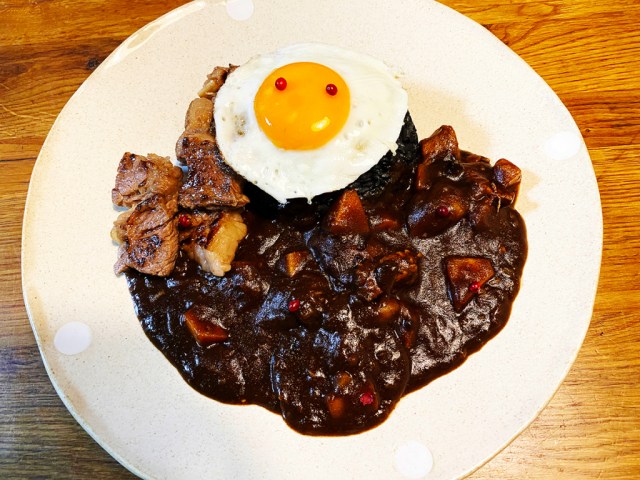
This unique curry that originated at a Japan Ground Self-Defense Force camp in Fukuoka has been making waves online.
A Nishinippon Shimbun article published on June 1 introduced a recipe for making an unconventional version of a favorite Japanese home-style dish. This version, called botayama curry (ボタ山カレー), has been served in the mess hall of the Japan Ground Self-Defense Force (JGSDF) Camp Iizuka in Fukuoka Prefecture since 2008. Our Japanese-language reporter was intrigued by the article and subsequently got in touch with the camp’s PR division to learn more about the curry’s origins and tips for making it himself.
▼ The particular presentation of the curry on its plate hasn’t changed since its initial inception and actually has meaning behind it, as we will see below.
According to the staff, the dish was originally created to boost morale for camp members participating in training drills. In a recent survey of members, many responded that their motivation to work hard goes up on days when botayama curry is being served. Its unusually dark appearance was initially besides the point, but when the dish gained recognition by media outlets and went viral on social media, the salient coloring became the focus and was met with “half surprised, half happy reactions.”
So what is the significance behind not only the black sauce but the black rice as well? “Botayama” refers to a “spoil tip,” or a large pile of accumulated waste rubble collected during coal mining. Some of Japan’s most productive coal mines were located in Iizuka (particularly in Chikuho, a former town merged into Iizuka in 2006) during the country’s period of industrialization, so the dish styles its appearance in a nod to local history.
To achieve that effect, edible bamboo charcoal powder is mixed in with uncooked rice in order to darken its color. Diced steak is also added to evoke the image of coal chunks and a fried sunny-side-up egg represents the full moon peeking over a coal mine.
The actual recipe for botayama curry was recently shared on Camp Iizuka’s Twitter account. This is what our reporter referred to while attempting his own take on the dish.
皆さんこんにちは!飯塚駐屯地です!
— 陸上自衛隊飯塚駐屯地 (@JGSDF_IIZUKA) May 22, 2020
今日は、以前紹介した駐屯地名物ボタ山カレーの調理風景とレシピを公開いたします。
興味のある方は是非ボタ山カレー作りにチャレンジしてみてください!
朝早くから調理していただいている糧食班の方々には感謝でいっぱいです!#飯塚駐屯地 #飯塚市 #筑豊 pic.twitter.com/5lvZojsTjL
The lower-left table lists all ingredients and measurements for one portion of curry. From top to bottom, they are:
- margarine
- minced garlic
- sliced onion
- beef leg meat
- quartered slices of ginseng
- chopped potato
- laurel [bay leaf]
- whole pink pepper
- feitan/妃湯 [a brand of stock; chicken stock can be a substitute]
- curry roux
- Masala kuro [black] curry
- soy sauce
- vegetable oil
- diced steak
- more minced garlic
- steak spices
- egg
- hot spice to your liking
- polished rice
- enhanced polished barley/oats
- edible bamboo charcoal powder
Most of the ingredients can be purchased at a regular Japanese supermarket. Here’s our reporter’s haul after a shopping trip:
There are four main steps in the recipe and three helpful tips.
1. Stir-fry the margarine, minced garlic, and onion well
Add margarine and minced garlic to the sliced onion. Tip 1: Carefully brown for one hour or until whenever the onion caramelizes (becomes amber in color).
2. Rub spices into the diced steak and grill over an iron surface
Rub the spices into the steak well and cook until brown spots appear. The aroma should be enticing at this stage and whet your appetite.
3. Cook the curry as usual
Sauté small chunks of potatoes and carrots in a saucepan. If you want the beef flavor to really stand out later, make sure to cut the vegetables into smaller pieces than the meat.
Here is where you combine the caramelized onion mixture, the diced steak, the other beef leg meat, stock, water, curry sauce, and laurel [bay leaf] together. Cover the pot and let simmer for 40 minutes.
4. After stopping the heat, add the masala kuro curry
Add the masala kuro curry in order to darken the curry produced in Step 3. Tip 2: the curry should be added only after the heat is cut. If it isn’t, the flavor of the masala will diminish.
Now we’ve finished Steps 1-4…but we can’t forget about one final important piece of the puzzle: the rice!
Tip 3 states that edible bamboo charcoal powder (two grams of powder per portion) should be mixed in well with the rice and barley/oats directly prior to cooking. If it’s added too early the grains will become stiff. Other than that addition, the rice mixture should be cooked as usual in a rice cooker using the regular amount of water.
Seeing the powder clouding the water is a strange and not altogether un-appetizing feeling…
Stir together well and let it cook. Upon opening the lid, it should look something like this:
This could be the end, but if you want to follow Camp Iizuka’s instructions to a T there’s one final missing piece: the fried egg that represents a full moon.
Add the cooked egg to the top, decorate with two pieces of pink pepper, and voila–the botayama curry is finished.
Thoughts on the taste
The curry had both sweet and spicy flourishes to it and a depth of flavor. Our reporter thought that it could be evenly loved by people of all ages. There was plenty of volume, especially with the addition of the steak bits and egg, and enough variety to never get tired of it.
The blackened rice certainly left a visual impact. A hint of the charcoal taste went well with the curry, which had also absorbed the water so at its best it could be called refreshing and at its worst it could be called a bit dry. He supposed it would depend on the individual taster but in his mind he though it would go well with thick curries but probably not with soup curries.
▼ SoraNews24’s take on botayama curry
On a final note, he mentions to keep a small mirror nearby because your teeth and lips will darken after eating it–as he found out the hard way from his family’s laughing.
Source: Nishinippon Shimbum, Twitter/@JGSDF_IIZUKA
Images © SoraNews24, Twitter/@JGSDF_IIZUKA (used with permission)
Top image: SoraNews24
● Want to hear about SoraNews24’s latest articles as soon as they’re published? Follow us on Facebook and Twitter!
[ Read in Japanese ]

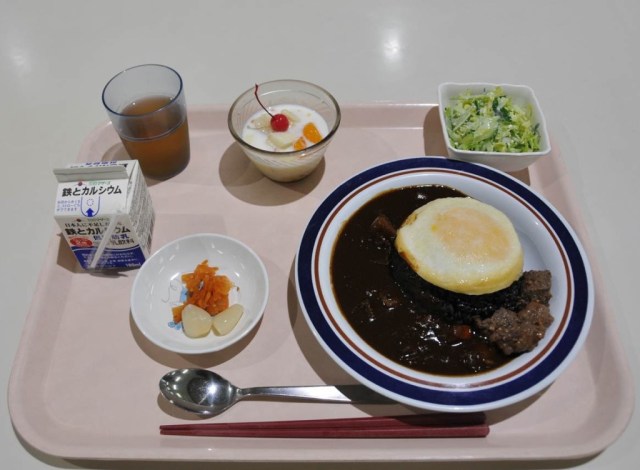
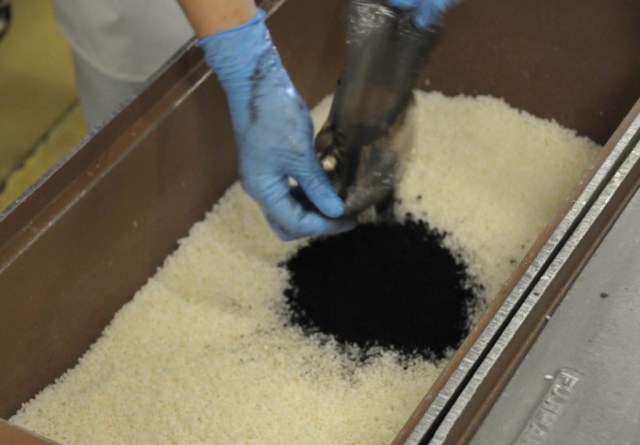
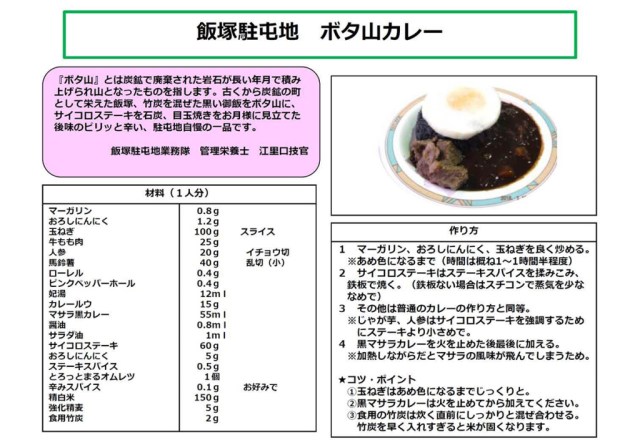
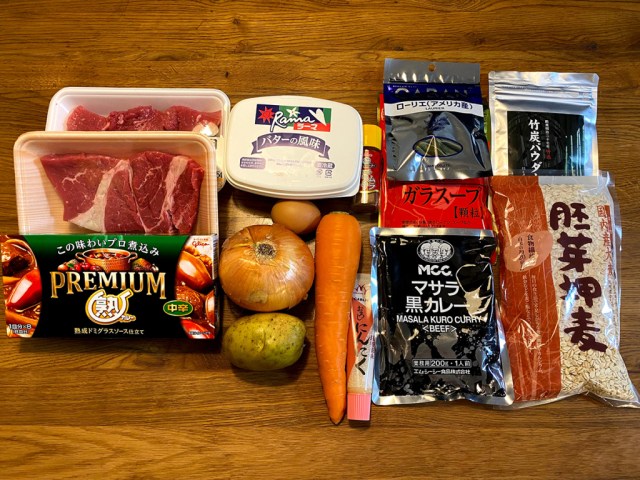
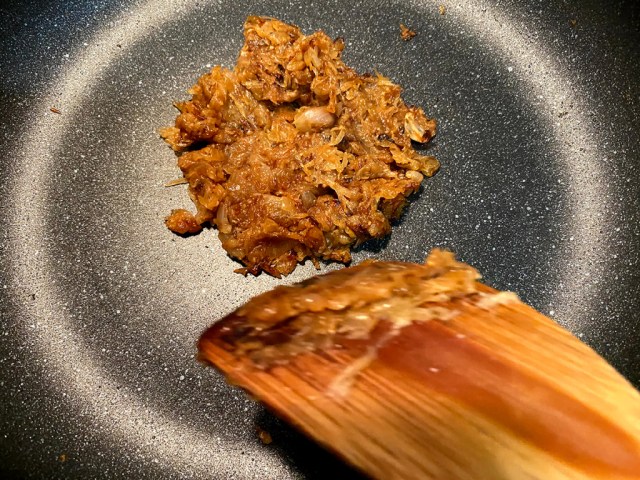

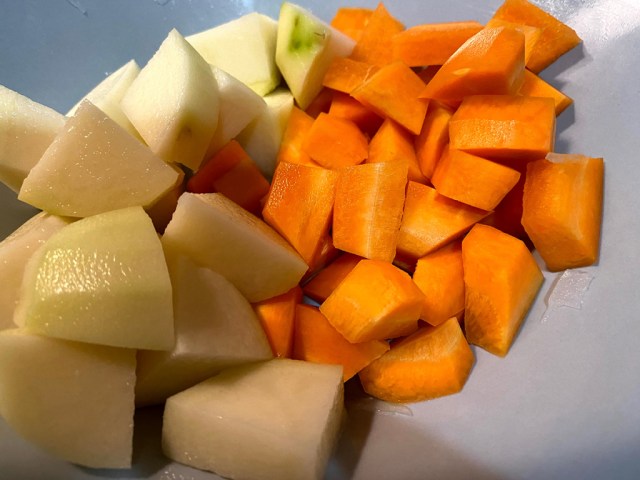
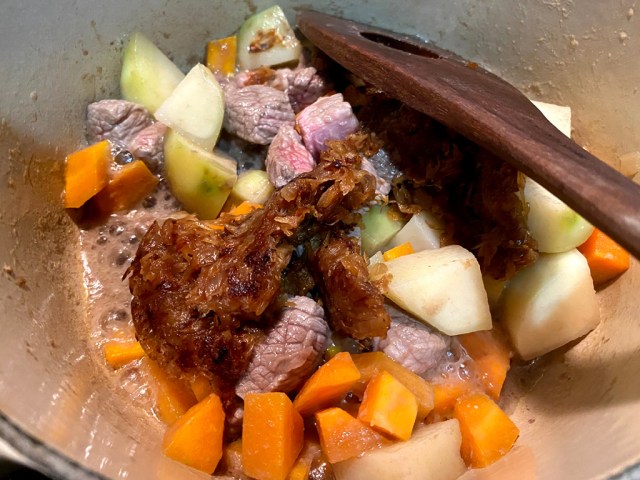
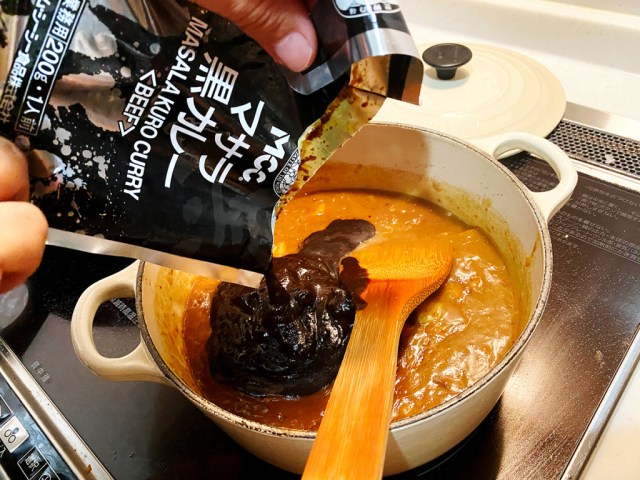
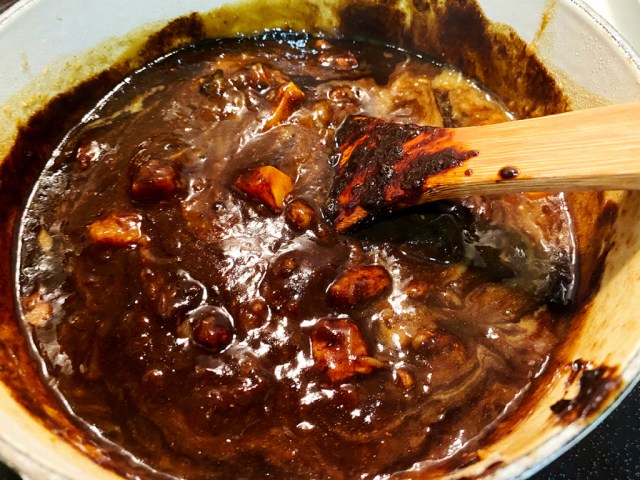
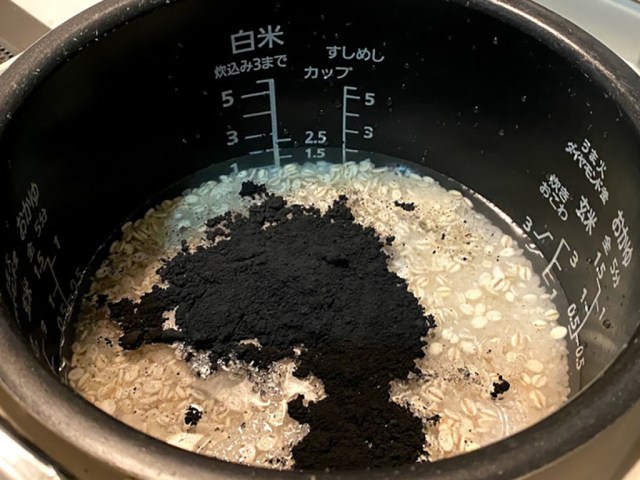
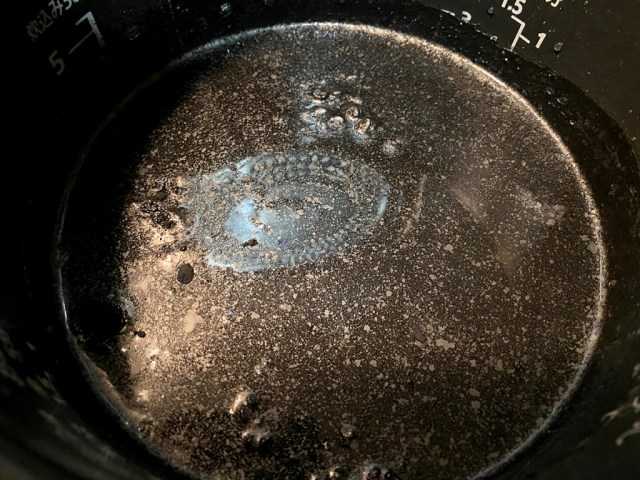
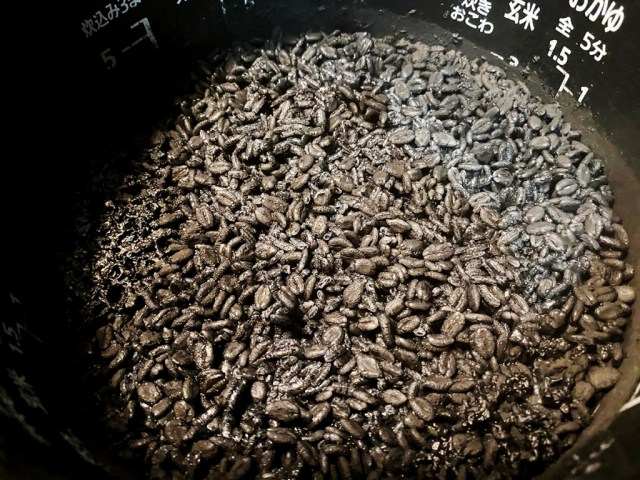

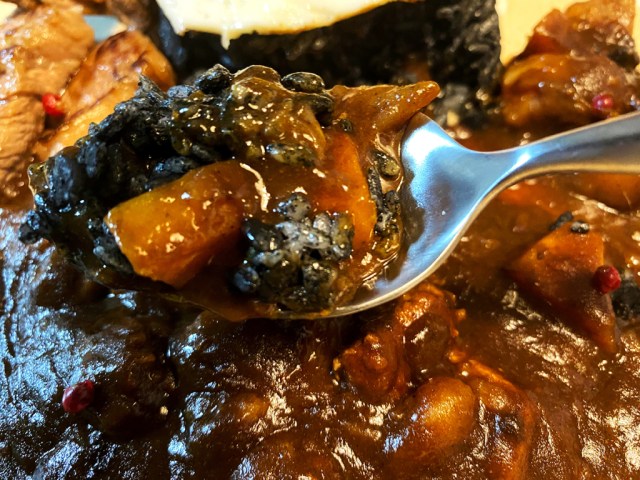
 Coffee-infused rice for rice balls and curry? Taste-testing a recipe from Japan’s coffee experts
Coffee-infused rice for rice balls and curry? Taste-testing a recipe from Japan’s coffee experts How to use leftover Japanese curry: We test out a recipe for curry bread quiche【SoraKitchen】
How to use leftover Japanese curry: We test out a recipe for curry bread quiche【SoraKitchen】 Japanese mum’s secret curry recipe puts a new spin on the beloved dish
Japanese mum’s secret curry recipe puts a new spin on the beloved dish We test the new two-in-one curry rice cooker from Japan that’s got everyone talking【Video】
We test the new two-in-one curry rice cooker from Japan that’s got everyone talking【Video】 Rakuten randomly offers 58 New Year’s osechi feasts in Japan, but did we get a star or a dud?
Rakuten randomly offers 58 New Year’s osechi feasts in Japan, but did we get a star or a dud? Play games, learn, and get your fortune at Ginza’s limited-time Tsunaguu “Shrine of the Future”
Play games, learn, and get your fortune at Ginza’s limited-time Tsunaguu “Shrine of the Future” Should you dip your cake in sake? One Japanese brewer says no, but actually yes【 Taste test】
Should you dip your cake in sake? One Japanese brewer says no, but actually yes【 Taste test】 New Studio Ghibli die-cast anime cars on their way, even if neither one is really a car【Pics】
New Studio Ghibli die-cast anime cars on their way, even if neither one is really a car【Pics】 Exhibition on the 1,500 year-history of traditional Japanese women’s clothing to open in Shibuya
Exhibition on the 1,500 year-history of traditional Japanese women’s clothing to open in Shibuya Four Shinto shrines to pray for love at in Japan to start the New Year
Four Shinto shrines to pray for love at in Japan to start the New Year How to get your money’s worth at an all-you-can-eat crepe challenge in Japan
How to get your money’s worth at an all-you-can-eat crepe challenge in Japan Breathtaking photos of one of Japan’s most beautiful hot springs have us ready to brave the snow
Breathtaking photos of one of Japan’s most beautiful hot springs have us ready to brave the snow A Fujoshi’s heaven on earth exists in Ikebukuro’s Boy’s Love Academy cafe
A Fujoshi’s heaven on earth exists in Ikebukuro’s Boy’s Love Academy cafe Japanese beef bowl chain Sukiya’s 2026 Smile Box lucky bag basically pays for itself
Japanese beef bowl chain Sukiya’s 2026 Smile Box lucky bag basically pays for itself Starbucks Japan ready to get Year of the Horse started with adorable drinkware and plushies【Pics】
Starbucks Japan ready to get Year of the Horse started with adorable drinkware and plushies【Pics】 Hayao Miyazaki says Happy New Year to Studio Ghibli fans with new art for Year of the Horse
Hayao Miyazaki says Happy New Year to Studio Ghibli fans with new art for Year of the Horse We found possibly the quietest Japanese-style hotel in Tokyo’s bustling Shinjuku district
We found possibly the quietest Japanese-style hotel in Tokyo’s bustling Shinjuku district Cup Noodle tries an authentic Jiro-style ramen, but something’s not quite right
Cup Noodle tries an authentic Jiro-style ramen, but something’s not quite right The best Starbucks Japan Frappuccinos we want to drink again in 2026
The best Starbucks Japan Frappuccinos we want to drink again in 2026 We revisited Sweets Paradise after a decade to see if Japan’s dessert buffet still delivers
We revisited Sweets Paradise after a decade to see if Japan’s dessert buffet still delivers That time Seiji called JASRAC to ask why he didn’t get paid royalties for his song being on TV
That time Seiji called JASRAC to ask why he didn’t get paid royalties for his song being on TV Japan’s oldest largetooth sawfish in captivity back on display in Mie Prefecture
Japan’s oldest largetooth sawfish in captivity back on display in Mie Prefecture Pizza Hut Japan’s hot lucky bags are perfect for a New Year’s pizza party
Pizza Hut Japan’s hot lucky bags are perfect for a New Year’s pizza party 7-Eleven Japan starts new temporary luggage storage service in over 300 branches
7-Eleven Japan starts new temporary luggage storage service in over 300 branches Disillusionment at Tsukiji’s tourist-target prices led us to a great ramen restaurant in Tokyo
Disillusionment at Tsukiji’s tourist-target prices led us to a great ramen restaurant in Tokyo Starbucks teams up with 166-year-old Kyoto doll maker for Year of the Horse decorations【Photos】
Starbucks teams up with 166-year-old Kyoto doll maker for Year of the Horse decorations【Photos】 Tokyo considering law requiring more trash cans following litter increase in heavily touristed area
Tokyo considering law requiring more trash cans following litter increase in heavily touristed area Tokyo’s Tsukiji sushi neighborhood asks tour groups to stay away for the rest of the month
Tokyo’s Tsukiji sushi neighborhood asks tour groups to stay away for the rest of the month Tokyo event lets you travel back in time, for free, to celebrate 100 years since Showa era start
Tokyo event lets you travel back in time, for free, to celebrate 100 years since Showa era start Japan may add Japanese language proficiency, lifestyle classes to permanent foreign resident requirements
Japan may add Japanese language proficiency, lifestyle classes to permanent foreign resident requirements Sanrio theme park in Japan announces plans to expand into a Sanrio resort
Sanrio theme park in Japan announces plans to expand into a Sanrio resort Stamina-destroying “Paralysis Noodles” are Tokyo’s newest over-the-top ramen innovation
Stamina-destroying “Paralysis Noodles” are Tokyo’s newest over-the-top ramen innovation Survey asks foreign tourists what bothered them in Japan, more than half gave same answer
Survey asks foreign tourists what bothered them in Japan, more than half gave same answer Japan’s human washing machines will go on sale to general public, demos to be held in Tokyo
Japan’s human washing machines will go on sale to general public, demos to be held in Tokyo Japan’s deadliest food claims more victims, but why do people keep eating it for New Year’s?
Japan’s deadliest food claims more victims, but why do people keep eating it for New Year’s? We deeply regret going into this tunnel on our walk in the mountains of Japan
We deeply regret going into this tunnel on our walk in the mountains of Japan Studio Ghibli releases Kodama forest spirits from Princess Mononoke to light up your home
Studio Ghibli releases Kodama forest spirits from Princess Mononoke to light up your home Major Japanese hotel chain says reservations via overseas booking sites may not be valid
Major Japanese hotel chain says reservations via overseas booking sites may not be valid Put sesame oil in your coffee? Japanese maker says it’s the best way to start your day【Taste test】
Put sesame oil in your coffee? Japanese maker says it’s the best way to start your day【Taste test】 No more using real katana for tourism activities, Japan’s National Police Agency says
No more using real katana for tourism activities, Japan’s National Police Agency says Starbucks Japan reveals new sakura drinkware collection, inspired by evening cherry blossoms
Starbucks Japan reveals new sakura drinkware collection, inspired by evening cherry blossoms Updated cherry blossom forecast shows extra-long sakura season for Japan this year
Updated cherry blossom forecast shows extra-long sakura season for Japan this year
Leave a Reply